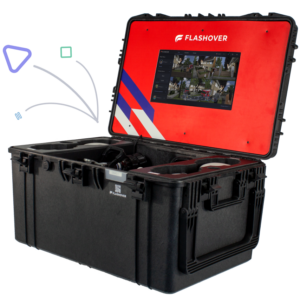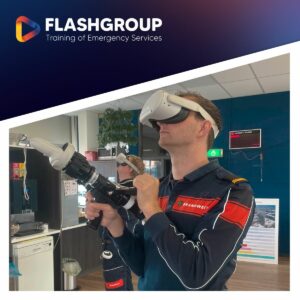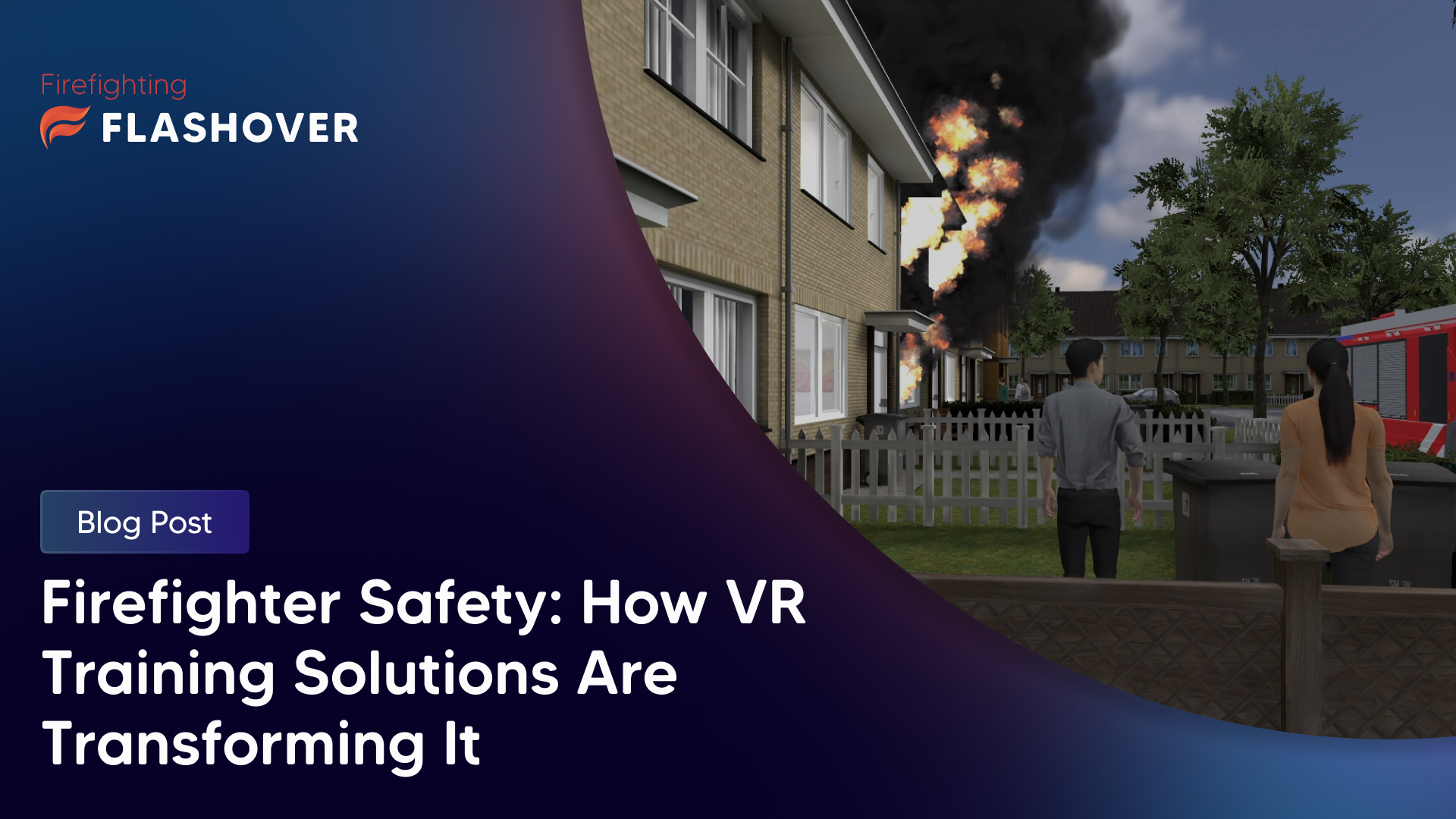As a company dedicated to creating and delivering XR training solutions for emergency services professionals (police, security, defence, firefighters & ambulance professionals), Flashgroup stands by the fact that VR is a revolutionizing and essential tool when it comes to optimizing your training needs.

Sneak Peak Into Our Software Interface
In this blog piece, we will look closer at how Virtual Reality learning opportunities are shaping a new era of immersive VR training for firefighters’ safety.

Flashover’s Turn-Key Box Solution
Realistic and Risk-Free Immersive Environments for Firefighter Safety Training
Virtual reality for fire service professionals isn’t just a technological success. It’s a practical and essential safety toolbox that creates life-like scenarios for firefighters to support their training needs and improve emergency preparedness. Take a look at the attached video, to receive a better idea of the usage of VR for immersive training with Flashover.
Virtual Reality environments can vary from burning residential fires to complex industrial accidents, allowing firefighters to experience a variety of situations in a controlled, safe setting. The VR training tool offers both physical and tactical features, enabling trainees (first responders) to feel the heat, make decisions under pressure, and practice coordination in a group setting improving teamwork cooperation.
Another example would be hazardous training. Through VR, firefighters can simulate the control of dangerous substances, something that’s risky and resourceful in real life. It enhances fire and life safety training and also adds to confidence in the decision-making process, all while being in a risk-free setting. Scenarios like urban search and rescue or wilderness operations can be precisely recreated, allowing teams to strategize and execute missions without real-world risks.

A Fire Safety Professional Using Flashover (Safety Region – Utrecht, The Netherlands)
The benefits of VR in firefighters’ safety training are numerous. It offers a risk-free environment for learning and practising and reduces training costs in terms of travelling and logistics. What’s more, Virtual Reality training can be easily updated to reflect new firefighting learning principles, ensuring being up-to-date with the latest techniques.
Besides all the information above, there is no doubt that VR safety training solutions and VR technology fro firefighters and not only are growing rapidly. Our team is aware of that and therefore we focus on multidisciplinary training for all emergency responders. Would you like to request a demo? Contact Our Experts.
